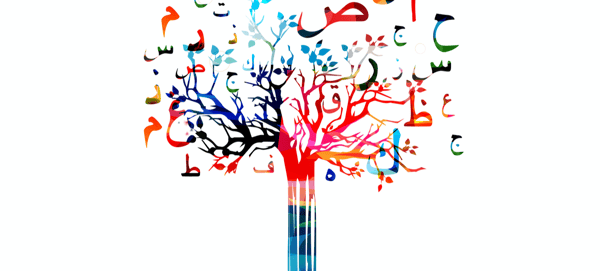There are several benefits to having a website available in multiple languages. In this article, we’re looking at whether Arabic should be one of them for your business. We’ve got all the stats, facts, benefits, challenges and tips you need when considering this as an option for your business.

Arabic language translation considerations
Arabic is the fourth most commonly used language on the internet and the fifth most commonly spoken language in the world. 420 million people situated across the Middle East, Northern Africa and parts of Asia speak Arabic, so if this the market you’re targeting, then translating your website to cater to their needs is paramount. The Middle East has a population of 260 million people, of which 183 million are internet users. That is 70% of the population, soaring above the global average of just 58%.
It is the official language in over 20 countries, including one of the United Nation’s 6 official languages. Certain countries, such as Saudi Arabia, require Arabic as the primary language for business dealings. Global companies and platforms including Coca-cola and LinkedIn have made Arabic part of their primary languages.
This is a language which is historical (as one of the world’s oldest Semetic languages), rich and poetic, with several possible words used for singular terms in English. It has unique sounds that are not present in other languages, with word construction based on certain roots. The writing is in cursive and reads from right to left. It is also diverse and complex. The language is embedded in differing historical contexts, cultures, politics, dialects and standards of living.
There are 3 primary types of Arabic, namely:
- Classical Arabic: This is the language in the most historical sense, as used in the holy Quran.
- Modern Standard Arabic (MSA): A derivative from classical Arabic. This is the version which is taught in schools and used in everyday life. However, there are various regional dialects to take into account.
- Colloquial: This is the commonly spoken version of Arabic and will be understandable to everyday people who may not necessarily have the educational background to be well versed in MSA, which is considered to be formal communication. This too has various dialects which need to be considered.
This makes the translation of your website into Arabic challenging, as you’ll need to get a regional specific translator who understands the culture of the area and the dialect necessary. There is a significant part of the Middle Eastern population that speak English, however research shows that people prefer to buy goods and consume content that is presented in their native language.
The benefits of translating your website
You’ll be tapping into profitable emerging markets. Arabic speaking countries have a collective GDP of $2.522 trillion. The countries are varied in their living standards, as you have the incredibly wealthy Saudi Arabia, as well as poverty stricken Yemen, for instance. Based on this, regionally specific targeting will likely be necessary.
The information regarding Arabic above, along with the strong Muslim identification of most Arab speakers, one needs to ensure that translations are done accurately. This will avoid the misuse of words, misinterpretation of meaning or offensive language.
It is clear to see that this market is significant and expanding. From a business standpoint, it is also evident that there are many opportunities to fill the gaps in the market. This includes the ability of an Arabic website to improve your credibility in the region. This will help to localise your brand, meet the expectations of your audience and also ensure that you fall in line with regulations of the area, should there be any requirements to do so.
Furthermore, since competition in this area is still low, you have the opportunity to build your search engine optimisation (SEO) significantly. Having an additional language on your website will build your page ranking, giving your business a competitive advantage and ideal starting point to work and grow from.
Tips for Arabic website translation
- Strategy: You need to be familiar with the specific target audience so that you can localise the content accordingly. You also need to be able to offer support in Arabic, as well as be ready to deliver your product/service to the region if you are based elsewhere.
- Technology: Automated translations may not be enough to capture the correct translations. The copy you translate should be clearly written and you should have a qualified professional to check everything. They can assist with grammar, capturing meanings, knowing which specific words from this expressive language are best to use and any cultural or industry-related nuances that are important to note.
- Website: The layout is crucial. Most websites are not developed to cater to the structure of the Arabic language. This can affect how your site looks in all regards, from the look and feel to the positioning of pop ups, for example. Careful review processes will be necessary in order to ensure that linguistic, technical and functional errors are corrected.
To answer the question: “Should I translate my website into Arabic?” Absolutely, if you’re targeting an Arabic speaking region or audience. While there are many considerations to be aware of, the benefits and opportunities of doing so far outweigh the challenges. By working with an agency who can provide you with adequate website site design and translation services, your business will be set to gain its share of this emerging market.
Looking for Arabic translations?
Nexa, Dubai's Leading Independent Digital Marketing Agency offers Arabic translations from English for all content, including websites, landing pages, brochures and social media posts to help you reach a new online audience.
%20(1).png?width=2701&height=607&name=BRC_NEXA_LOGO_WHITE%20(2)%20(1).png)
